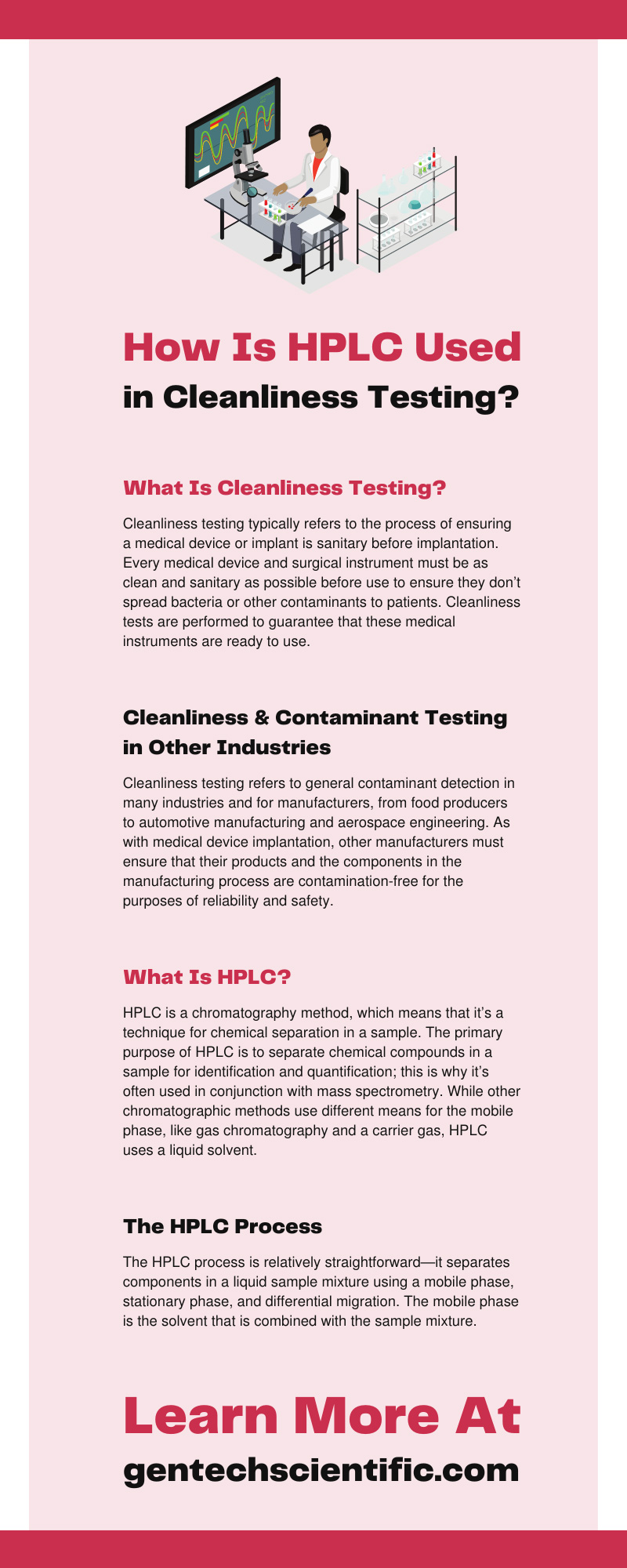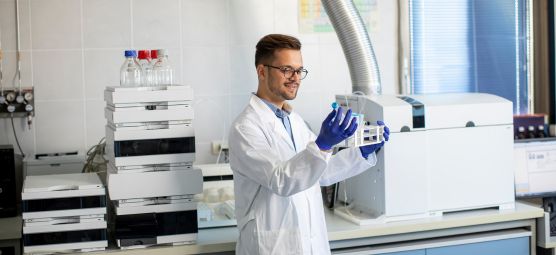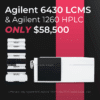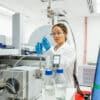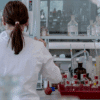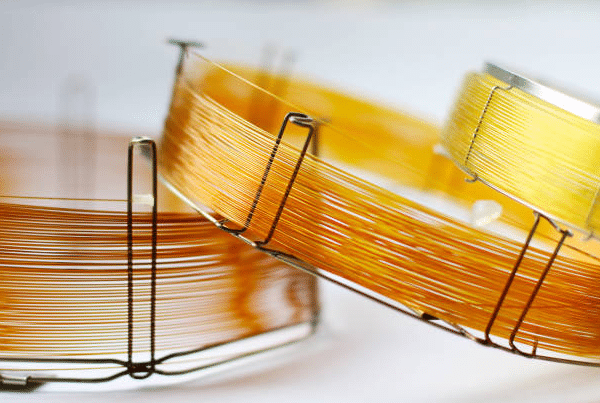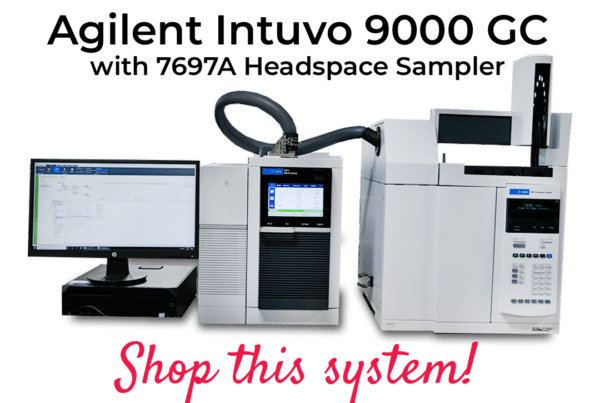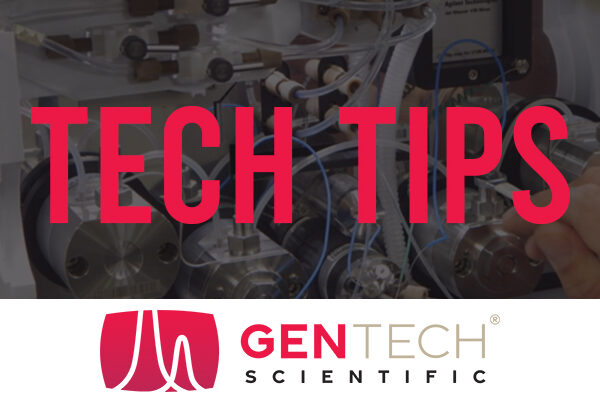High-performance liquid chromatography (HPLC) is widely used in many industries, for various applications. Cleanliness testing is one of those applications. Explore the basics of cleanliness testing, how HPLC is applied, and other applications for HPLC.
What Is Cleanliness Testing?
First, what does cleanliness testing mean, and why is it important? Cleanliness testing typically refers to the process of ensuring a medical device or implant is sanitary before implantation.
Every medical device and surgical instrument must be sanitary before use so patients aren’t exposed to bacteria or other contaminants. To guarantee that these medical instruments are ready to use, cleanliness tests are crucial.
Cleanliness & Contaminant Testing in Other Industries
Cleanliness testing refers to general contaminant detection. This is critical in many industries, and for manufacturers from food producers to automotive manufacturing and aerospace engineering. With medical device implantation for example, manufacturers must ensure that their products and the manufacturing process are contamination-free.
Whatever the industry or application, there’s always a use for cleanliness testing to identify harmful chemical contaminants that could damage equipment or product. While there are many cleanliness testing methods, HPLC is one of the most popular due to its sensitivity and speed.
What Is HPLC?
Before exploring the advantages of HPLC and how it’s used in cleanliness testing and other applications, it’s important to understand what HPLC is. HPLC is a chromatography method, which means that it’s a technique for chemical separation in a sample.
The primary purpose of HPLC is to separate chemical compounds in a sample for identification and quantification; this is why it’s often used in conjunction with mass spectrometry. While other chromatographic methods use different means for the mobile phase, like gas chromatography and a carrier gas, HPLC uses a liquid solvent.
The HPLC Process
The HPLC process is relatively straightforward—it separates components in a liquid sample mixture using a mobile phase, stationary phase, and differential migration. The mobile phase is the solvent that is combined with the sample mixture.
The mobile phase delivers the sample to a separation column—the station phase—where differential migration occurs as the solvent and sample compounds slowly move through the column and separate within the flow. The components of the sample emerge from the column at different times, delivering a voltage response recorded in the chromatogram. The time and voltage response information helps identify the sample’s chemical components.
Why Is HPLC Ideal for Cleanliness Testing?
HPLC is a common method for cleanliness testing, but why? Many aspects of HPLC make it ideally suited for cleanliness testing.
Sensitivity & Convenience
The primary benefit of HPLC is its sensitivity and accuracy in separating chemical compounds. There are other chromatographic methods that may be faster and better suited for more volatile compounds. But HPLC is considered the best in most applications for sensitive chemical separation, including cleanliness testing.
HPLC instruments automate much of the process making it a convenient and easy chromatographic method. As well, these processes can be perform with minimal training.
Speed
Another advantage of HPLC is that it’s reliable and fast. As previously mentioned, HPLC is mostly automated. So the entire procedure can be done in less than 30 minutes—and as quickly as 10 minutes.
This testing speed makes HPLC the more efficient and productive process for many industries and applications. Typically, in chromatographic and other testing methods, there’s a compromise in sensitivity and speed. That is not the case with HPLC.
Are There Other Applications for HPLC?
HPLC is a common method for cleanliness testing, but that is not the only application for which it is utilized. HPLC is integral to a multitude of industries – from food production to pharmaceutical development, and more.
Food Production
One industry that frequently utilizes HPLC is food production. In the modern world, much of the food and drink purchased at grocery stores comes from mass-production sources.
While these food production sources are convenient, they often use chemicals and additives to grow large quantities of food, including vegetables and fruits. Many utilize pesticides to keep insects from destroying vegetable and fruit crops, which is good for the plant but not for people. As part of quality control and safety, many food producers use HPLC to ensure their food is pesticide and contaminant free.
Pharmaceutical Development
Another industry that uses HPLC for quality control is pharmaceuticals. Pharmaceutical companies use HPLC to guarantee there are no contaminants in their products so they’re safe for consumption.
Drugmakers also use HPLC to test the purity and ingredients of pharmaceuticals to ensure that the ingredient lists and doses are accurate. HPLC is integral to ensuring that prescription drug labels are accurate, which is crucial for user safety.
Medical Diagnosis & Research
HPLC is a common method in medical diagnosis and research. It’s an excellent process for separating and identifying chemical compounds in people. HPLC can quickly and accurately analyze the chemical compounds in blood or other fluids to identify components such as vitamins or nutrients. Doctors can use these results to identify ailments, including vitamin deficiencies.
Medical researchers also utilize HPLC in research, particularly when identifying biomarkers for diseases in patients. With HPLC, medical researchers can better identify the biomarkers that precede illnesses. In turn, healthcare providers can more accurately identify early signs of illness and intervene with proper treatments.
Law Enforcement
Along with detecting vitamin deficiencies and biomarkers, HPLC is applied to detecting illegal or banned substances in a subject’s body. Forensic toxicologists frequently use HPLC in tandem with mass spectrometry to detect substances such as illegal narcotics or doping agents.
Law enforcement officials use HPLC to identify drugs are in a deceased person’s system and determine the cause of death. Many sports organizations also use HPLC for detecting banned substances in participants.
Conclusion
We hope this explainer highlights why HPLC is so useful, as well as the connection between HPLC and cleanliness testing. Have questions about HPLC equipment? Need to procure instruments for your lab?Please browse our inventory or contact our staff today.
